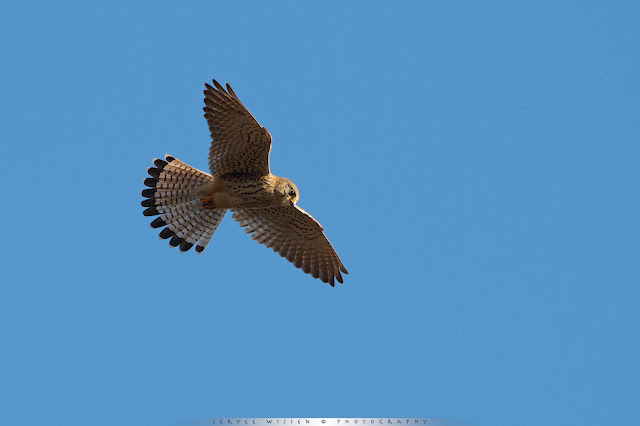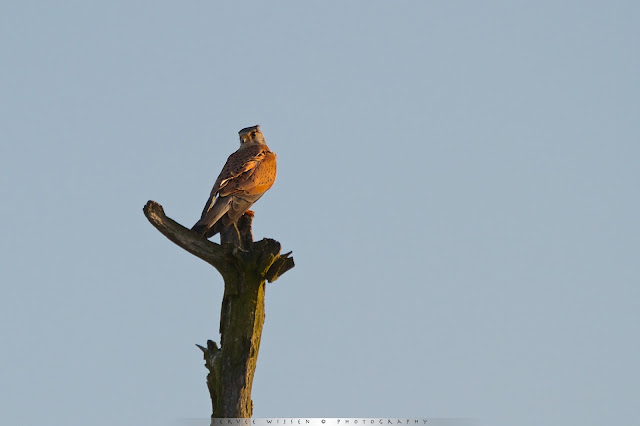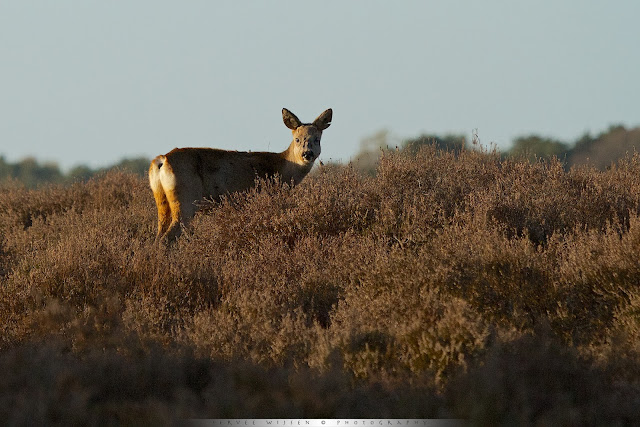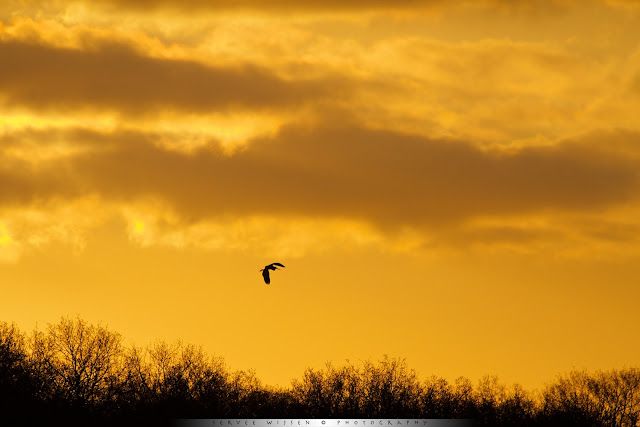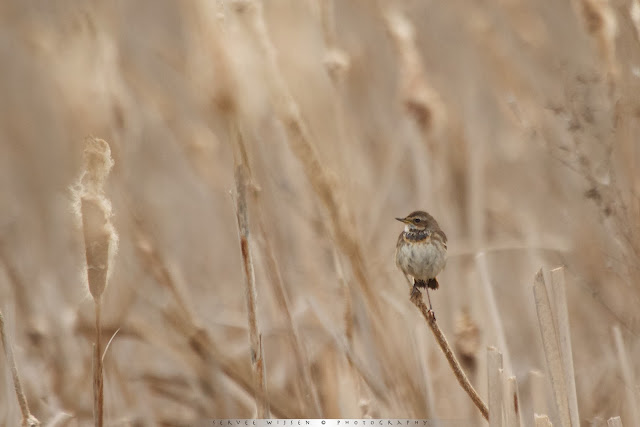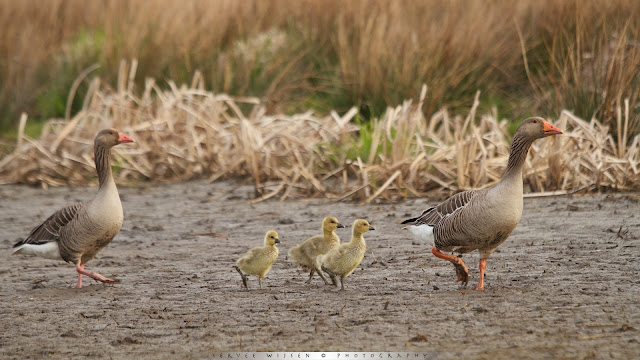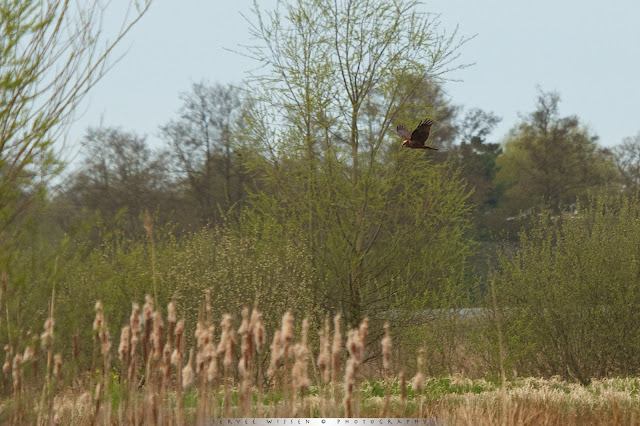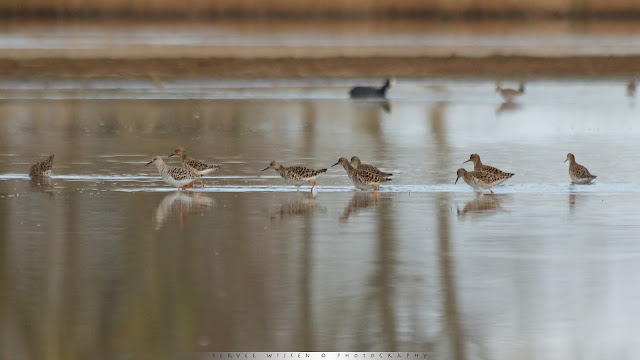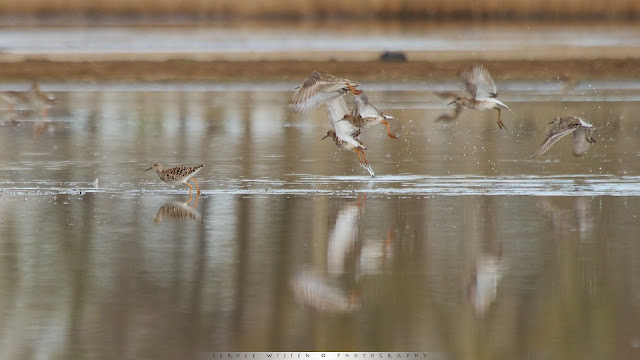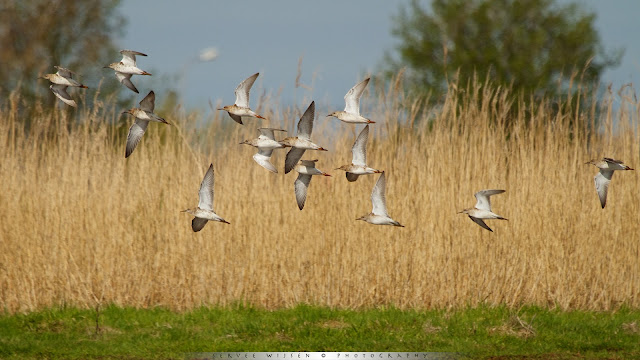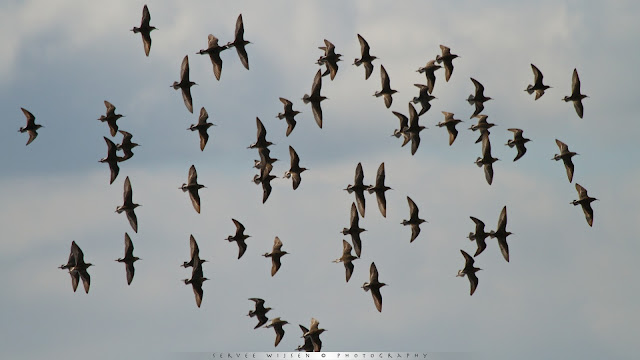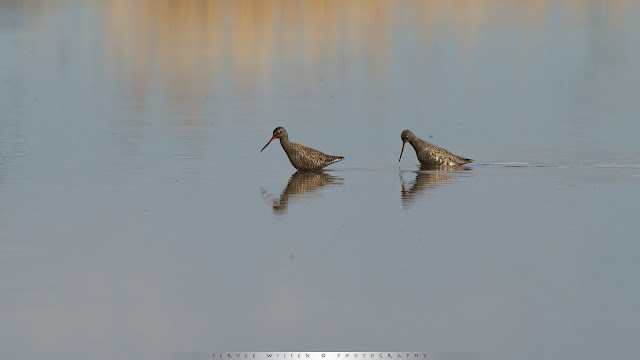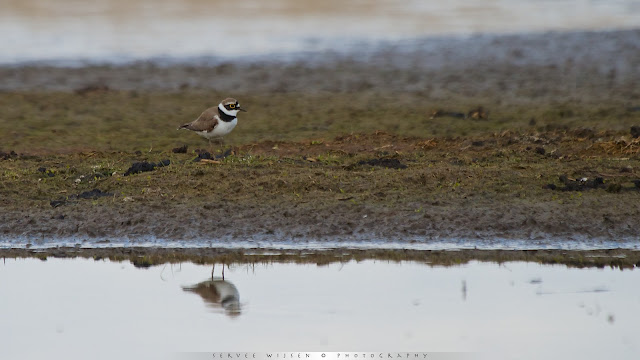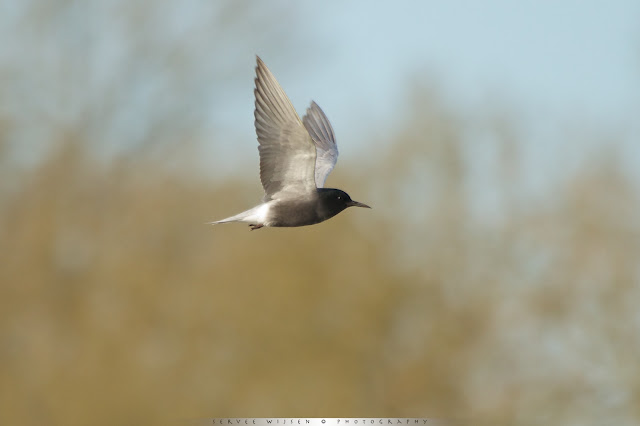Vandaag werd de nieuwe Koning ingehuldigd. Alhoewel ik niet kan ontkennen dat ik het ritueel ook met belangstelling gevolgd heb op tv ben ik er 's avonds toch maar op uit gegaan en kwam ik een koning tegen van een andere soort. Deze Reebok ziet er uit alsof hij het voor het zeggen heeft hier in zijn territorium. Hij ziet er stoer en sterk uit met een mooi zesender gewei en zo te zien een flinke wond op zijn hals, misschien opgelopen tijdens een gevecht met een rivaal.
---------------------------------------------------------------------------------------------
Today a new King was installed in the Netherlands. Although I can't deny having followed the ritual on tv with some interest, I decided to go out in the evening and came across this king of a different species. This Roe Deer buck looks like it could reign here in it's own territory. It's looking strong and tough with it's big antlers and what looks like a fair gash in it's neck which maybe suffered from a fight with a rival.
Today a new King was installed in the Netherlands. Although I can't deny having followed the ritual on tv with some interest, I decided to go out in the evening and came across this king of a different species. This Roe Deer buck looks like it could reign here in it's own territory. It's looking strong and tough with it's big antlers and what looks like a fair gash in it's neck which maybe suffered from a fight with a rival.
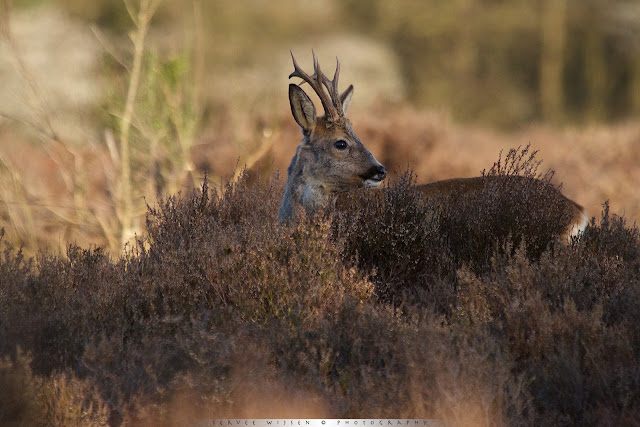 |
| Ree - Roe Deer - Capreolus capreolus |
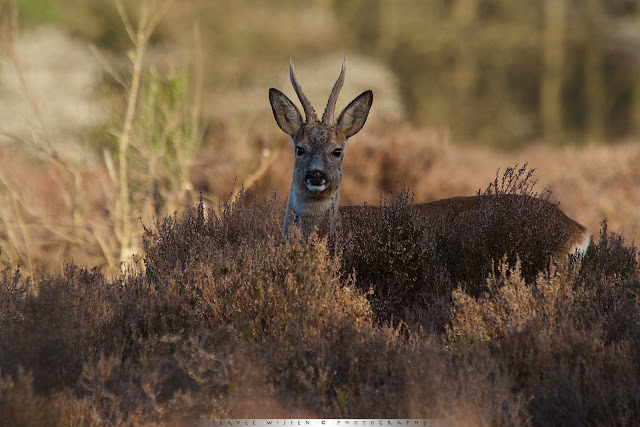 |
 |
 |
 |
 |
Op de hei zijn weer volop Roodborsttapuiten te vinden. Hier een mannetje...
---------------------------------------------------------------------------------------------
Stonechats are back in their habitat on heathlands. This is a male...
Stonechats are back in their habitat on heathlands. This is a male...
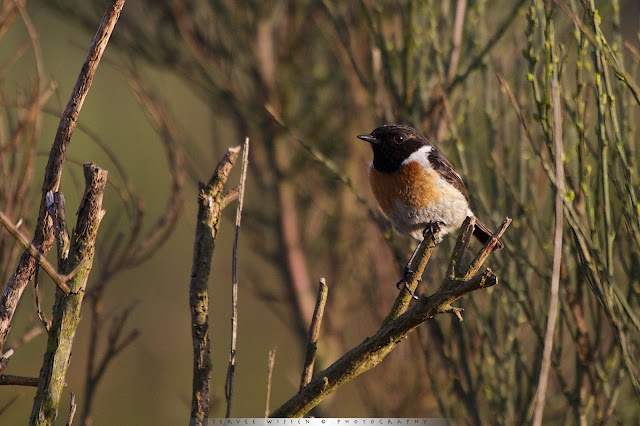 |
| Roodborsttapuit - Stonechat - Saxicola torquata (ad m) |
Ook de Tapuiten zijn weer terug uit hun overwinteringsgebieden op de Afrikaanse Savanne. Ze broeden vaak in oude konijnenholen. Op de foto een mannetje. Zie het verschil met de Roodborsttapuit. De naam is in het Nederlands verwarrend. Het zijn verschillende soorten met een héél verschillend uiterlijk.
---------------------------------------------------------------------------------------------
Wheatears also returned from their winter retreats on the african savanna. They often breed in Rabbit holes. I the photo is a male. The difference with the Stonechat is obvious in looks and family name, but not so in their Dutch names, which both contain the word 'Tapuit'.
Wheatears also returned from their winter retreats on the african savanna. They often breed in Rabbit holes. I the photo is a male. The difference with the Stonechat is obvious in looks and family name, but not so in their Dutch names, which both contain the word 'Tapuit'.
 |
| Tapuit - Northern Wheatear - Oenanthe oenanthe |
Deze dame was verast door mijn aanwezigheid en besloot een omweg te nemen naar het bos dat achter de afrastering ligt:-)
---------------------------------------------------------------------------------------------
This lady Roe Deer was surprised by my presence on her shortcut route to the forest ( which lies behind the fence) and decided to take a detour :-)
This lady Roe Deer was surprised by my presence on her shortcut route to the forest ( which lies behind the fence) and decided to take a detour :-)
 |
| Ree - Roe Deer - Capreolus capreolus |
Ook de Graspieper is weer volop te zien, en te horen. Dat je ze kunt horen is handig om ze te kunnen onderscheiden van de Boompiepers. Ze lijken namelijk erg veel op elkaar maar zingen een ander deuntje. Deze zat wel erg mooi in het late zonlicht.
---------------------------------------------------------------------------------------------
Meadow Pipets are also abundant again. They are easily confused with Tree Pipets which look very much alike and can be best distinguished by their different song. This one posed nicely in the late sunlight.
---------------------------------------------------------------------------------------------
Meadow Pipets are also abundant again. They are easily confused with Tree Pipets which look very much alike and can be best distinguished by their different song. This one posed nicely in the late sunlight.
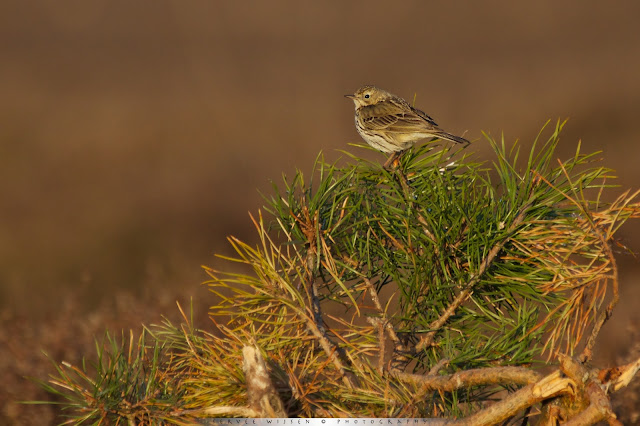 |
| Graspieper - Meadow Pipet - Anthus pratensis |
Schotse Hooglanders vindt je overal in Nederland op in Heidegebieden. Ze eten het gras tussen de hei weg en voorkomen zo 'verbossing'.
---------------------------------------------------------------------------------------------
Everywhere on heathland in The Netherlands you can find Scottish Highland cattle. They Keep the vegetation short and prevent the open heathland from becoming forest.
Everywhere on heathland in The Netherlands you can find Scottish Highland cattle. They Keep the vegetation short and prevent the open heathland from becoming forest.
 |
| Schotse Hooglander - Scottish Highlander - Bos taurus ss |
Greetzzzz, Servee
Geen van deze foto's mag zonder mijn schriftelijke toestemming worden gebruikt voor publicatie of welk ander doel dan ook. Een link naar deze pagina is uiteraard wel toegestaan. Neem voor meer informatie contact op via mijn website www.serveewijsen.com
-----------------
None of the contents or photos published here may be used for publication or any other purposes without my written permission. linking to this page is permitted. For more information on using these images please contact me through my website www.serveewijsen.com

